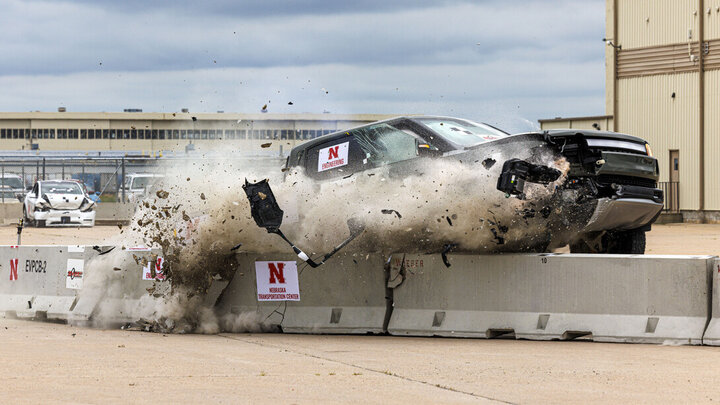New results from a crash test using an electric 2022 Rivian R1T pickup truck raise more questions whether significant upgrades are needed to prepare the nation’s highways for rapidly increasing numbers of electric vehicles.
The July 1 test was the fourth electric vehicle crash test conducted by the Midwest Roadside Safety Facility at the University of Nebraska-Lincoln since September 2023. The tests aim to determine whether commonly used highway guardrails and traffic barriers can reduce the risk of injury and death when an electric vehicle leaves the road.
More than 19,000 people died in crashes where their vehicle left the roadway in 2023, according to early estimates from the National Highway Traffic Safety Administration. About half of all traffic fatalities occur in such crashes. Guardrails, median barriers and similar infrastructure items are designed to reduce the number and severity of such crashes by preventing vehicles from crossing medians and entering oncoming lanes of traffic, careening off bridges or pitching into ravines or down slopes.
All four tests have raised concerns whether current highway safety features — which are designed and tested for vehicles with internal combustion engines — will be sufficient as electric vehicles become more widely adopted.
“Historically, there has not been any testing of electric vehicles with roadside barriers — what works, how the vehicles behave and how the barrier systems interact with the vehicle,” said Cody Stolle, lead investigator for electric vehicle crash tests for the Midwest Roadside Safety Facility.
One of only three public highway safety research laboratories in the U.S., the Nebraska facility was the first to begin testing electric vehicles against guardrails. Only one EV test against guardrails has been conducted outside Nebraska.




